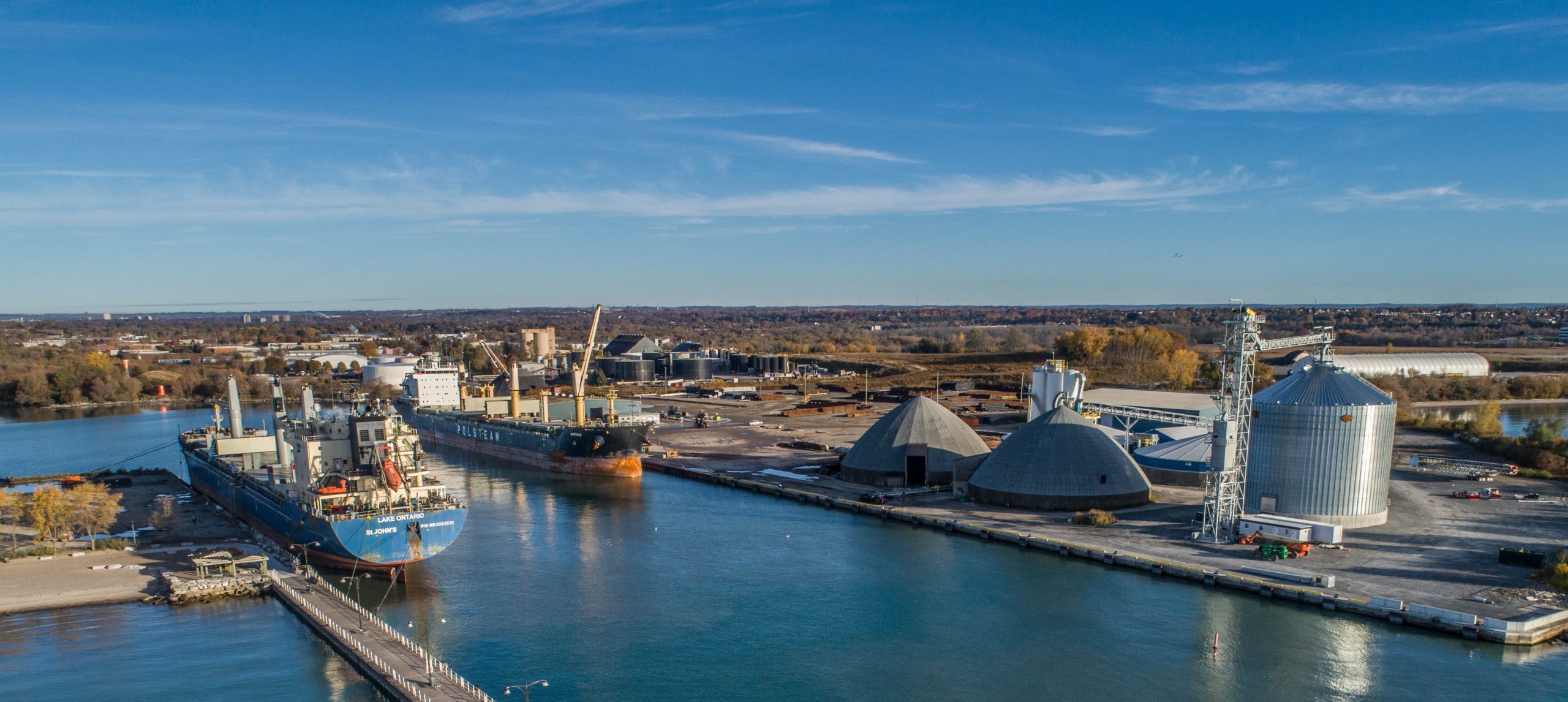All-time high cargo tonnage at the Port of Oshawa; packed construction season in Hamilton
January 19, 2021
HAMILTON, ON – Shipping season on the Great Lakes closed on January 8, and at the combined ports of Hamilton and Oshawa, HOPA Ports has reported a total tonnage for the season of 10.6 million metric tonnes. A total of 649 vessels visited the two ports during the 2020 season, 571 in Hamilton, and 78 in Oshawa.
“There was a point this past spring when things were looking rather bleak due to COVID shutdowns, and our tonnage was down by over 30 per cent,” recalls HOPA Ports President & CEO Ian Hamilton. “Since then, the reopening of the economy made for an extremely busy 4th quarter and we closed out the season on a decidedly optimistic note.”
Cargo
At the Port of Hamilton, while steelmaking and petroleum products were lower this year, strong showings in commodities like grain, fertilizer, finished steel, salt and gypsum have made up the balance. The port saw a final tonnage total of close to 10 million MT by season close, almost exactly on-par with 2019’s results.
The Port of Oshawa meanwhile, posted its best season ever, with tonnages at this smaller port exceeding 672,000 MT for the first time, driven by strong trade in fertilizer, grain, steel and cement. The Port of Oshawa is a strategic gateway to the Greater Toronto regional market. HOPA anticipates that as regional construction activity resumes in 2021, the Port of Oshawa will make an important contribution to rebuilding our economy by efficiently delivering the materials needed for infrastructure, residential and civil construction projects.
Infrastructure investment
2020 was also a record year for new infrastructure investments. At the Port of Hamilton, an ambitious capital investment program had HOPA Ports’ engineering team hard at work, with more than $21 million in projects underway, aimed at growing port capacity and improving efficiency. On Pier 15, Fluke Transportation is currently nearing completion of a 56,000 sq.ft expansion of a new warehouse facility, providing distribution for a variety of food products and consumer goods. The new facility is providing in-demand capacity for the region’s $1 billion food sector.
At nearby Piers 12 and 14, work is underway to modernize and expand the port terminal operated by Federal Marine Terminals (FMT). The new expansion includes rebuilding dock walls; construction of a new, 40,000 sq.ft warehouse; a new rail connection to Pier 15; resurfacing and upgrading of piers, roads, and environmental features.
The Fluke and FMT investments are in part the outcomes of an injection of infrastructure funding that was announced in 2017. The $36 million Westport Modernization Project started with $18 million each in contributions by HOPA Ports and the federal government’s National Trade Corridors Fund. This investment in base infrastructure has already served as the catalyst for an additional $50 million in 3rd party private sector investment. “The outcomes we’re seeing today really illustrate the value of investing in our national transportation infrastructure,” said HOPA Ports’ Ian Hamilton. “When we can move goods efficiently, Canadian businesses can compete globally, and they have the confidence to invest.”
In Oshawa, a new grain terminal constructed by QSL for Sollio Agriculture completed its first full season, for the first time allowing Durham farmers to deliver their crop to an export facility within their own region, rather than trucking it often clear across the Greater Toronto Hamilton Area. The new Port of Oshawa terminal serves an estimated 200 farmers in the Durham region whose products include soybeans, wheat and corn.
HOPA Launches Niagara Ports
2020 also saw HOPA Ports extend its Great Lakes port network to include Niagara, combining HOPA-owned and managed properties to develop a new, 200-acre multimodal hub facility in Thorold, Ontario. This announcement was the first concrete step in the Niagara Ports plan, jointly developed by HOPA and local Niagara civic leaders, to create a corridor of multimodal industrial hubs along the Welland Canal. This effort is intended to attract industry to the region, reduce costs for shippers and develop the Niagara trade corridor, with HOPA contributing its expertise in developing marine-industrial lands.
Thriving in uncertain times
“We are exceptionally pleased about our results in 2020 especially in light of the challenges posed by the Covid-19 pandemic,” notes Ian Hamilton. “We’re proud of the role the HOPA Ports network has played in keeping Canada’s supply chains moving. We are grateful to our port partners who have come together in an unprecedented way to protect port workers, seafarers, and residents in our port cities.”
| Commodity | 2020 Tonnage – Hamilton & Oshawa (metric tonnes) |
| Steel making commodities | 5,027,505 |
| Grain (including soybeans) | 2,578,753 |
| Fertilizer & Potash | 583,630 |
| Salt | 414,241 |
| Sand, Stone, Gypsum, Cement | 824,796 |
| Petroleum incl. asphalt | 274,790 |
| Other liquid | 44,714 |
| Steel products | 787,105 |
| Project cargo & containers | 3,409 |
| Other | 58,056 |
| TOTAL | 10,596,999 |
Media contact:
Larissa Fenn
HOPA Ports
Tel: (905) 667-3292 | Cell: (905) 518-7632
[email protected]
www.hopaports.ca
About HOPA Ports
As an integrated port network, the Hamilton Oshawa Port Authority offers port and marine assets on the Great Lakes. HOPA is developing multimodal spaces to support Ontario’s industries and facilitate trade. By investing in high-quality infrastructure and prioritizing sustainability, HOPA is building prosperous working waterfronts in Ontario communities.
Photos:


